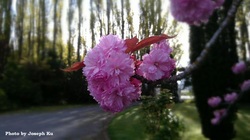Top 5 Misconceptions About Tree Removal Services
We want to set the record straight and help you make confident, informed decisions when it comes to tree removals on your property.
What Factors Affect the Cost of Tree Removal in NZ?
Tree removal can sometimes be essential, whether it’s for safety reasons, development, or simply to clear space.
Why Regular Tree Maintenance Helps Financially in the Long Run
For professional arborist services across New Zealand, consider reaching out to qualified experts like the team at Beaver Tree Service.
How Much Does Tree Trimming Cost in New Zealand?
If you're wondering how much tree trimming might cost in New Zealand in 2025, you're not alone.
Beaver Tree Service Autumn Newsletter – April 2025
Celebrating Teamwork, Fast Response, Community Spirit, and Rising Talent
Trusted Arborist Services in Wellington
If you live in the wider Wellington region, Paraparaumu, Kapiti, Waikanae, and Otaki—then our teams can help with everything from tree removal to stump grinding, hedge trimming to tree pruning.
Tree Care Tips
We’ve compiled these articles so that you too, can benefit from the experience and knowledge that our arborists and skilled tree techs have. We are committed to our customers and desire that you enjoy and value your tree’s as much as we do.
Giving back to the community in various ways is yet another one of our key focuses.
 Spring is the perfect time to prune your ornamental trees, the sap has stopped rising, most trees are finishing flowering & leaves have developed. Trees are actively growing so any cuts are going to heal well. Trees are less prone to disease or infections due to the above reasons when pruned at this time of year. So for healthier trees & more sun during those evening BBQ’s & entertaining prune at the right time. If you need help or would prefer an expert arborist to do this for you please give us a CALL NOW on 344-6223 for your FREE Spring Tree Appraisal.
Spring is the perfect time to prune your ornamental trees, the sap has stopped rising, most trees are finishing flowering & leaves have developed. Trees are actively growing so any cuts are going to heal well. Trees are less prone to disease or infections due to the above reasons when pruned at this time of year. So for healthier trees & more sun during those evening BBQ’s & entertaining prune at the right time. If you need help or would prefer an expert arborist to do this for you please give us a CALL NOW on 344-6223 for your FREE Spring Tree Appraisal.